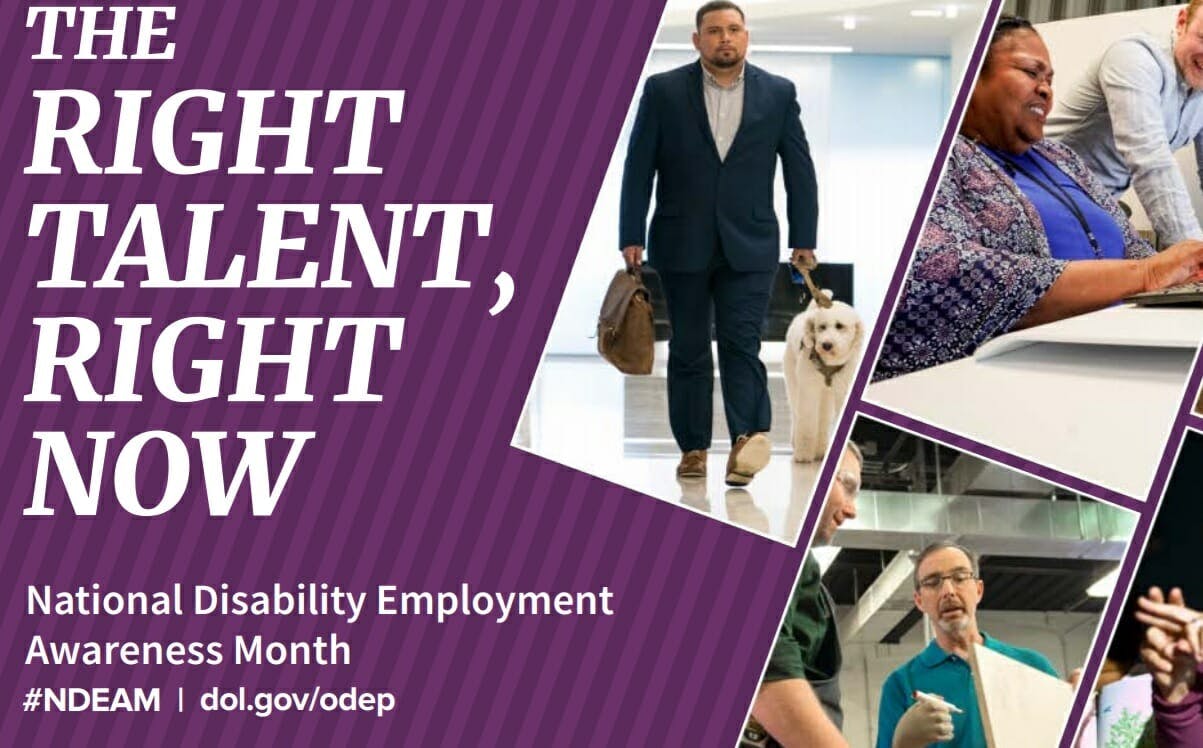Every year, October marks the annual occurrence of National Disability Employment Awareness Month, a time when employers and workers alike are encouraged to shatter their stereotypes and myths about hiring and retaining individuals with disabilities.
For more than 70 years, organizations nationwide have been celebrating the many contributions of this group to the American workforce. And this year, the Office of Disability Employment Policy issued a national proclamation reminding employers all across the United States that individuals with disabilities have the right talent, right now.
Employers too often overlook these individuals, despite the fact that a study from Accenture, showed that companies that excelled in their disability hiring and inclusion practices outperformed others in the study, achieving 28% higher revenue and 30% higher economic profit margins.
Still, people with disabilities are often discriminated against because employers are concerned about misconceptions, such as, there’s an added cost to hiring them, too many missed days of work, or less productivity. These are pervasive myths. The reality is that individuals recovering from a debilitating condition are eager to return to work. In fact, 52% of the people we work with us at Allsup tell us they want to go back to work once their condition improves – they miss the financial independence, sense of purpose, and the promise of a bright future that a career can provide – and as such individuals with disabilities tend to be more reliable and loyal employees.
Employers can ensure their organization is inclusive of this hardworking group by putting the right policies in place and making reasonable accommodations. In this instance, reasonable is synonymous with affordable – for an accommodation to be considered reasonable, it must not cause undue harm to the company, and fortunately, many accommodations are free or cost less than $500. Some worth mentioning include flexible hours, work-from-home arrangements or supplying screen-reader software or adjustable desks.
Recruiting, hiring and supporting individuals with disabilities isn’t difficult, and when employers consider the many benefits of doing so, it’s truly a no-brainer decision. One benefit is that rehiring an employee who had to take time off work due to a medical condition will save the employer both time and money. Hiring and training new individuals costs employers an average of $1,886 per employee each year, according to a 2017 study by Training Magazine, whereas rehiring individuals who already know the company and possess the skills needed to get the job done may cost next to nothing.
Another benefit is that these highly skilled, qualified individuals can fill in the gaps in today’s tight labor market. The nation’s September unemployment rate for workers without a disability is 3.2%; however, the unemployment rate for individuals with disabilities is nearly double, at 6.1%. Tapping into this highly capable population could be the key to finding the talent employers so desperately need. For example, Social Security Disability Insurance (SSDI) beneficiaries typically have twenty-plus years of work experience. SSDI recipients are former workers and a potential talent pool to consider.
One way to tap into this talent pool is by using an Employment Network (EN). ENs help thousands of people with disabilities across the nation to find or return to jobs. These networks work with SSDI recipients who are part of the Ticket to Work (TTW) program. This is a free service offered by the Social Security Administration to help those receiving Social Security disability benefits get back to work.
ENs streamline the process and complete the necessary paperwork to connect this network of future employees to the business leaders who need them. Employment Networks often provide personalized return-to-work planning, benefits coordination, vocational guidance, and job interview and job placement assistance – at no cost to the SSDI beneficiary.
Working with ENs – a list of ENs around the nation can be found here – employers can locate qualified workers with disabilities. Then, by making the workplace disability-friendly and implementing inexpensive or no-cost accommodations, business leaders can set workers with disabilities – and in turn their businesses – on a path for long-term success.
